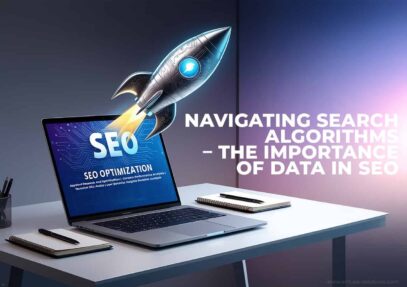
In the quickly changing digital world of today, agriculture is no longer confined to conventional farming practices. Integrating data-driven technologies is modernizing rural agriculture, transforming it into a highly efficient and sustainable sector. The power of data in this transformation cannot be overstated, as it plays a pivotal role in increasing productivity, optimizing resources, and driving economic growth in rural areas. From precision farming to real-time market analysis, data is revolutionizing how farmers operate and make decisions.
The Current Landscape Of Rural Agriculture
Agriculture continues to be the foundation of numerous economies, especially in developing nations. In low-income countries, agriculture is the primary source of income for many people, according to the World Bank. However, rural agriculture is often plagued by challenges such as unpredictable weather patterns, inefficient resource use, and limited access to modern tools and technologies. This is where data-driven solutions come into play, allowing farmers to modernize their practices and overcome these obstacles.
The Role Of Data In Transforming Agriculture
Data has the potential to transform every stage of the agricultural process, from planting to harvesting and beyond. Here are some key ways data is modernizing rural agriculture:
1. Precision Farming
Precision farming, or precision agriculture, uses data to monitor and manage variations in fields, helping farmers optimize input use such as water, fertilizers, and pesticides. GPS technology, drones, and IoT devices collect data on soil conditions, weather, and crop health, allowing farmers to make informed decisions that boost crop yields and reduce resource wastage. A report by MarketsandMarkets estimates that the precision farming market is expected to grow from $9.7 billion in 2023 to $21.9 billion by 2031, at a compound annual growth rate (CAGR) of 10.7%.
2. Smart Irrigation
Water scarcity is a major concern for farmers in rural areas. Smart irrigation systems, powered by data, help farmers monitor soil moisture levels and weather conditions to apply the right amount of water at the right time. This enhances crop health in addition to conserving water. According to a report by the International Water Management Institute (IWMI), smart irrigation systems can reduce water usage by up to 25% while increasing crop yields by 20-30%.
3. Supply Chain Optimization
Data plays a critical role in optimizing agricultural supply chains. By analyzing data on crop production, market demand, and transportation logistics, farmers can better manage their inventory and distribution processes. This reduces post-harvest losses, which, according to the Food and Agriculture Organization (FAO), account for nearly 14% of global food production. Improved supply chain management ensures that fresh produce reaches markets on time, reducing waste and maximizing profits for rural farmers.
4. Weather Forecasting And Risk Management
Unpredictable weather conditions can devastate rural agriculture. With the help of data analytics and artificial intelligence (AI), farmers can access real-time weather forecasts and risk assessments. This allows them to proactively protect their crops from extreme weather events such as floods, droughts, and storms. A study by the National Oceanic and Atmospheric Administration (NOAA) found that farmers who use weather data for decision-making see a 25% reduction in crop damage.
5. Market Access And Pricing Insights
Data-driven platforms are enabling rural farmers to gain access to real-time market prices and demand forecasts. This empowers them to negotiate better prices for their produce and plan their planting schedules based on market trends. A report by McKinsey highlights that farmers who use digital platforms to access market data can increase their income by up to 50%.
Real-World Examples Of Data-Driven Agriculture
Several countries are already reaping the benefits of data-driven agriculture:
- India: With its large rural population, India is embracing the potential of data in agriculture. The government’s AgriStack initiative is a national digital platform that provides farmers with access to data on weather, soil health, crop insurance, and market prices. The platform seeks to increase farmers’ earnings and modernise Indian agriculture. According to a report by the Indian Council of Agricultural Research (ICAR), the use of data-driven technologies could increase farm productivity by 25-30%.
- Kenya: In Kenya, smallholder farmers are using mobile-based platforms like FarmDrive to access credit based on their data, such as crop production records and market prices. This data helps financial institutions assess farmers’ creditworthiness, providing them with much-needed capital to invest in modern farming techniques. Consequently, crop yields for these farmers have increased by 20%.
The Economic Impact Of Data-Driven Agriculture
The economic benefits of data-driven agriculture are immense. According to a report by the World Economic Forum (WEF), the global adoption of digital agriculture technologies could generate up to $2.3 trillion annually by 2030. This growth is driven by increased productivity, reduced resource consumption, and improved supply chain efficiency.
In rural areas, data-driven agriculture can create new job opportunities, not only in farming but also in technology, logistics, and finance. For example, the demand for skilled workers to operate drones, manage IoT devices, and analyze data is on the rise. This digital transformation is helping to bridge the urban-rural divide, bringing economic development to previously underserved regions.
Challenges And Solutions
Despite its potential, the adoption of data-driven agriculture in rural areas faces several challenges:
- Limited Access To Technology: Many rural farmers lack access to smartphones, the internet, and other digital tools necessary for data-driven farming. Governments and private organizations must invest in infrastructure development to ensure that rural communities have access to these technologies.
- Digital Literacy: Farmers need to be trained in using digital tools and interpreting data. Initiatives like digital literacy programs and farmer cooperatives can play a key role in educating rural farmers about the benefits of data-driven agriculture.
- Data Privacy And Security: Concern over data security and privacy is growing as more information is gathered from farms. Governments and technology providers must work together to establish clear regulations and guidelines to protect farmers’ data and ensure it is used ethically.
The Future Of Data In Rural Agriculture
The future of rural agriculture is undeniably data-driven. As the world’s population continues to grow, the demand for food will increase, putting pressure on farmers to produce more with fewer resources. Data-driven technologies will play a crucial role in meeting this challenge, ensuring that rural agriculture remains sustainable, efficient, and profitable.
According to the MarketsandMarkets report, the global agricultural market is projected to grow at a CAGR of 10.4% from 2024 to 2029, driven by the adoption of digital agriculture solutions. By harnessing the power of data, rural farmers can not only increase their productivity but also contribute to global food security.
Conclusion
Data has the potential to revolutionize rural agriculture by providing farmers with the insights they need to make informed decisions. As digital technologies continue to advance, the role of data in modernizing agriculture will only grow. With the support of companies like EnFuse Solutions and the increasing adoption of data-driven tools, rural farmers can enhance productivity, increase their incomes, and contribute to a more sustainable agricultural future.

















Comment